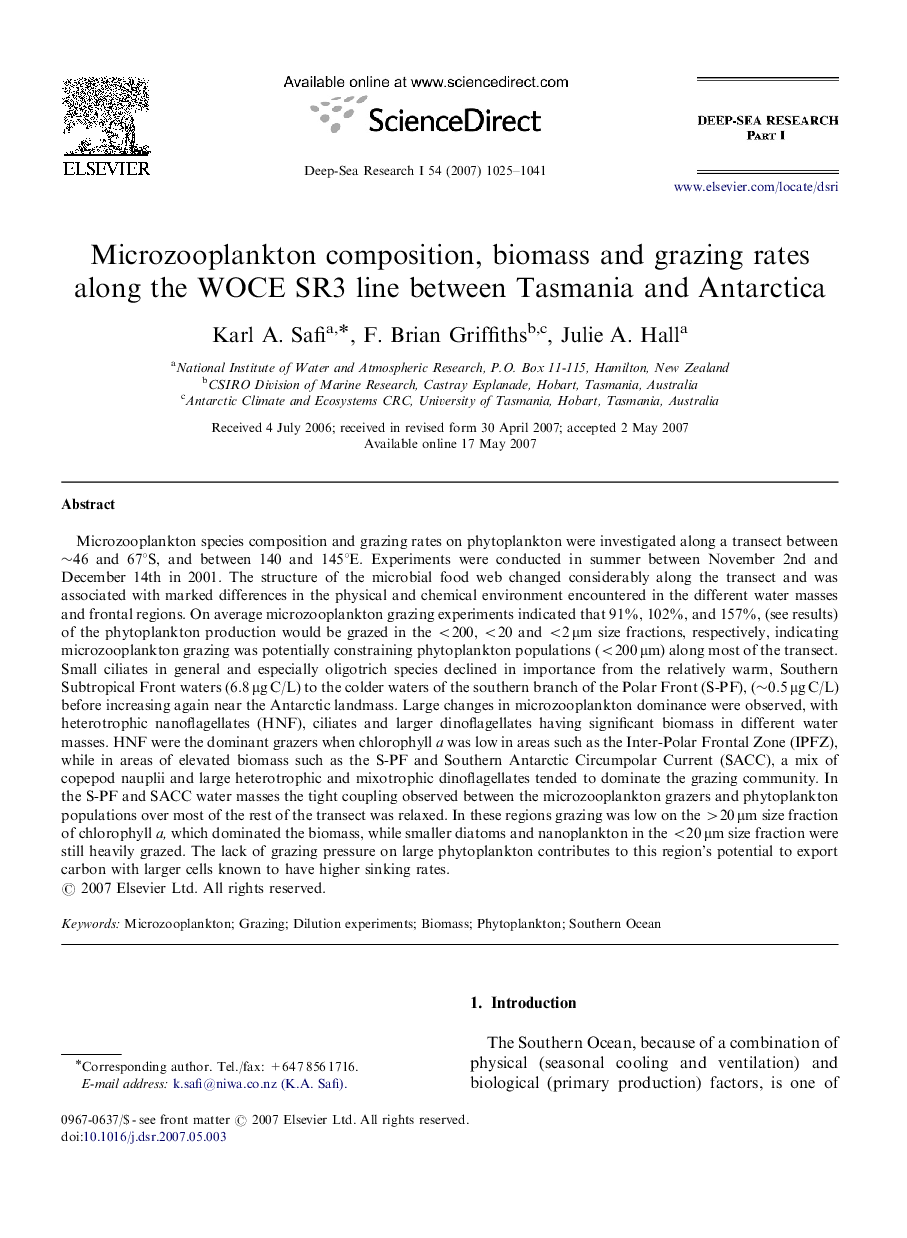| کد مقاله | کد نشریه | سال انتشار | مقاله انگلیسی | نسخه تمام متن |
|---|---|---|---|---|
| 4535662 | 1326128 | 2007 | 17 صفحه PDF | دانلود رایگان |

Microzooplankton species composition and grazing rates on phytoplankton were investigated along a transect between ∼46 and 67°S, and between 140 and 145°E. Experiments were conducted in summer between November 2nd and December 14th in 2001. The structure of the microbial food web changed considerably along the transect and was associated with marked differences in the physical and chemical environment encountered in the different water masses and frontal regions. On average microzooplankton grazing experiments indicated that 91%, 102%, and 157%, (see results) of the phytoplankton production would be grazed in the <200, <20 and <2 μm size fractions, respectively, indicating microzooplankton grazing was potentially constraining phytoplankton populations (<200 μm) along most of the transect. Small ciliates in general and especially oligotrich species declined in importance from the relatively warm, Southern Subtropical Front waters (6.8 μg C/L) to the colder waters of the southern branch of the Polar Front (S-PF), (∼0.5 μg C/L) before increasing again near the Antarctic landmass. Large changes in microzooplankton dominance were observed, with heterotrophic nanoflagellates (HNF), ciliates and larger dinoflagellates having significant biomass in different water masses. HNF were the dominant grazers when chlorophyll a was low in areas such as the Inter-Polar Frontal Zone (IPFZ), while in areas of elevated biomass such as the S-PF and Southern Antarctic Circumpolar Current (SACC), a mix of copepod nauplii and large heterotrophic and mixotrophic dinoflagellates tended to dominate the grazing community. In the S-PF and SACC water masses the tight coupling observed between the microzooplankton grazers and phytoplankton populations over most of the rest of the transect was relaxed. In these regions grazing was low on the >20 μm size fraction of chlorophyll a, which dominated the biomass, while smaller diatoms and nanoplankton in the <20 μm size fraction were still heavily grazed. The lack of grazing pressure on large phytoplankton contributes to this region's potential to export carbon with larger cells known to have higher sinking rates.
Journal: Deep Sea Research Part I: Oceanographic Research Papers - Volume 54, Issue 7, July 2007, Pages 1025–1041